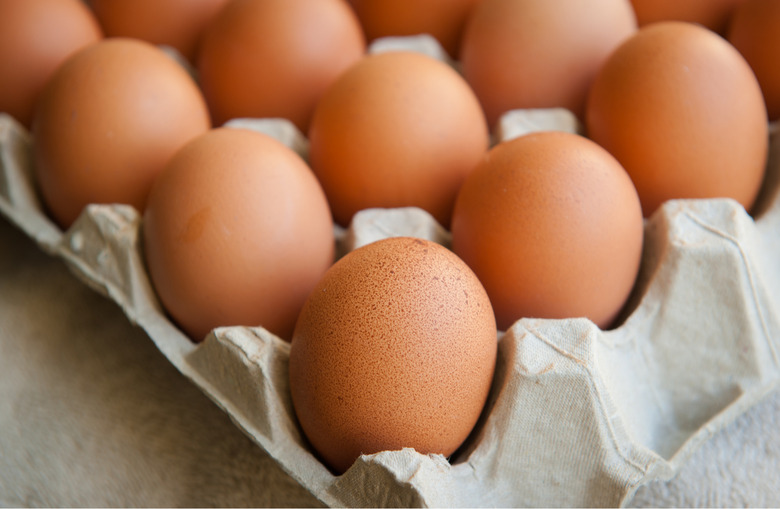How To Tell If Eggs Are Bad Or Not
Unless you have a direct and reliable source for eggs, it is often hard to tell when your eggs were actually laid. Store-bought eggs usually have "best by" dates listed on their cartons, and although that date can give a clue as to freshness, it ultimately is not a sure sign of whether or not an egg is still good to eat. However, there is an easy kitchen hack that will tell you in just seconds whether your eggs have gone bad.
The Shelf Life of Rice, Flour and Other Pantry Staples
Place your eggs in a bowl of water filled to the top. If an egg lies on its side on the bottom of the bowl, it's still fresh. If it sits upright but is still resting on the bottom of the bowl, your egg is on the older side but still good to go — perfect for hard boiling and peeling. If the egg floats, however, there is a good chance it may be expired.
This trick isn't foolproof, though. The reason an old egg floats is because it has an air cell that grows larger as it ages, causing it to become buoyant in water. While a floating egg does mean it's older, it might still be perfectly safe to eat.
The most simple and accurate way to figure out whether or not an egg is still good is to crack it into a bowl and check to see if it has a bad smell or looks unusual in any way. Fresh shell eggs that have been kept in the fridge at a temperature of 45 degrees Fahrenheit or lower are safe for eating up to four to five weeks past the date listed on the carton. This date, known as the Julian date, is indicated by a number from 001 to 365 that stands for which date of the calendar year the eggs were packed on.
If you find yourself with eggs that you're trying to use up before they go bad, there are plenty of great egg-based recipes that you can make to finish off that carton.
